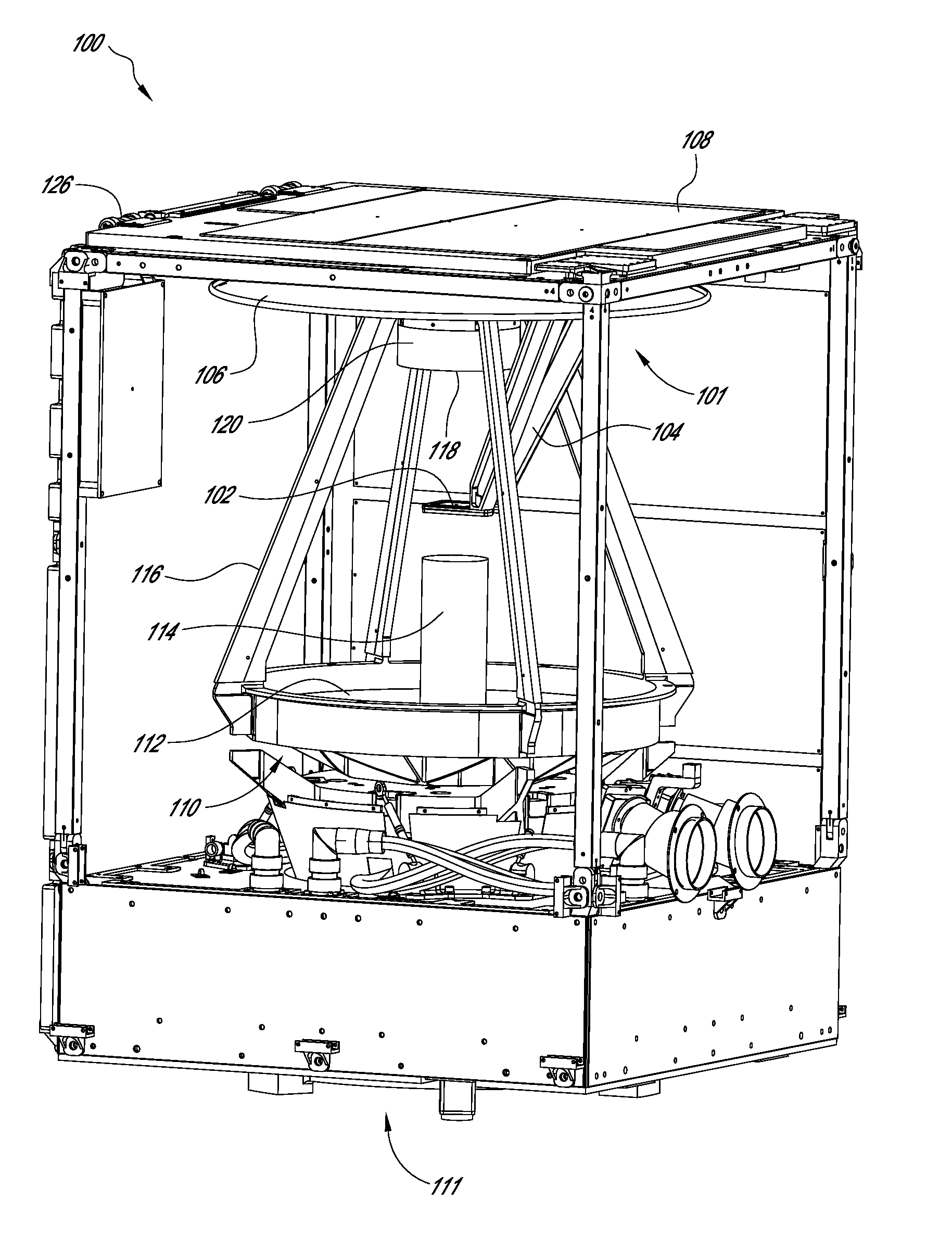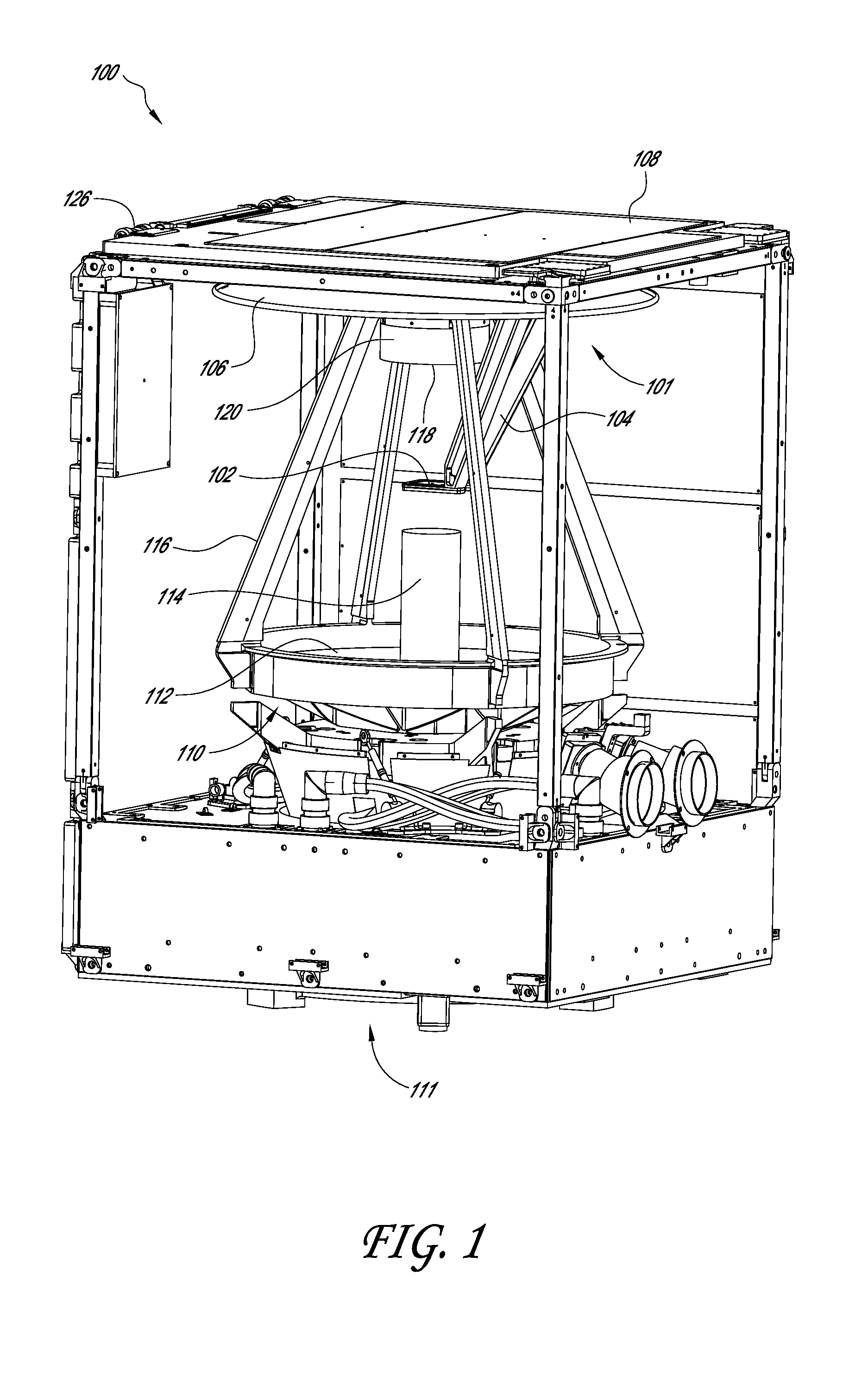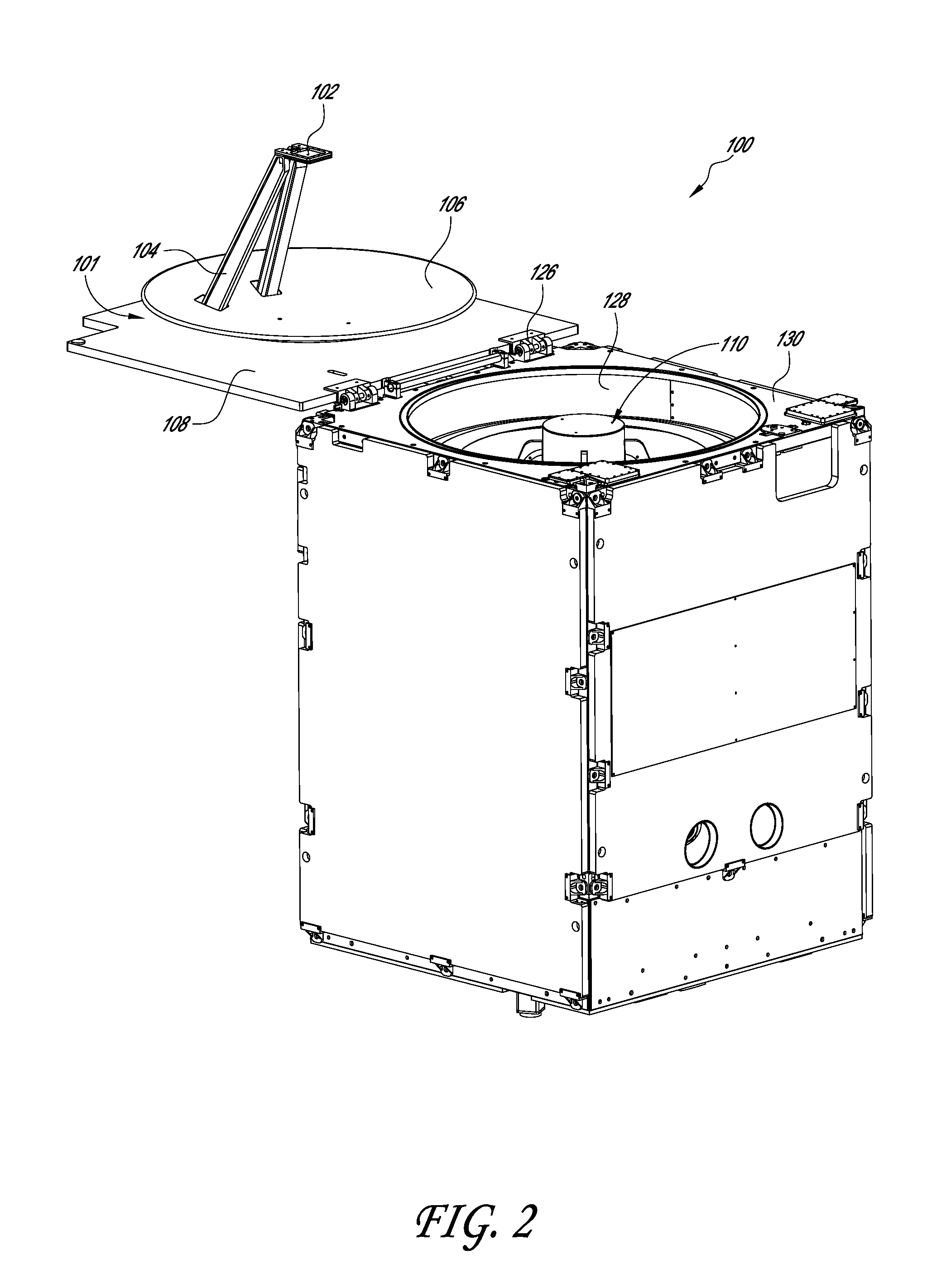Integrated antenna system for imaging microsatellites
an integrated antenna system and microsatellite technology, applied in the field of microsatellite, can solve the problems of reducing such as the antenna for communication, the cost of manufacturing and launch a traditional satellite, and the possibility of large satellites rendering the possibility impractical or unworkable, etc., to achieve sufficient communication systems, reduce the available space for other components, and maximize the efficiency of the included components
- Summary
- Abstract
- Description
- Claims
- Application Information
AI Technical Summary
Benefits of technology
Problems solved by technology
Method used
Image
Examples
example method
of Designing an Imaging Microsatellite
[0068]FIG. 6 is a flow diagram representing an example of a method 300 of designing an imaging microsatellite with an integrated reflector antenna system. In operational block 302 configuration parameters of a microsatellite can be obtained. The microsatellite can be configured to conform to the ESPA envelope, or other launch vehicle standards. The configuration parameters can include the design, layout, dimensions, and configuration of the microsatellite including the available interior cavity space and opening through which an imaging system can view the Earth. The configuration parameters can also include the design, layout, dimensions, and configuration of the imaging system disposed within the interior cavity of the microsatellite. For example, the imaging system may include a telescope. The imaging system configuration parameters can include information about the size and configuration of the telescope, its primary and secondary (or other)...
PUM
 Login to View More
Login to View More Abstract
Description
Claims
Application Information
 Login to View More
Login to View More - R&D
- Intellectual Property
- Life Sciences
- Materials
- Tech Scout
- Unparalleled Data Quality
- Higher Quality Content
- 60% Fewer Hallucinations
Browse by: Latest US Patents, China's latest patents, Technical Efficacy Thesaurus, Application Domain, Technology Topic, Popular Technical Reports.
© 2025 PatSnap. All rights reserved.Legal|Privacy policy|Modern Slavery Act Transparency Statement|Sitemap|About US| Contact US: help@patsnap.com



